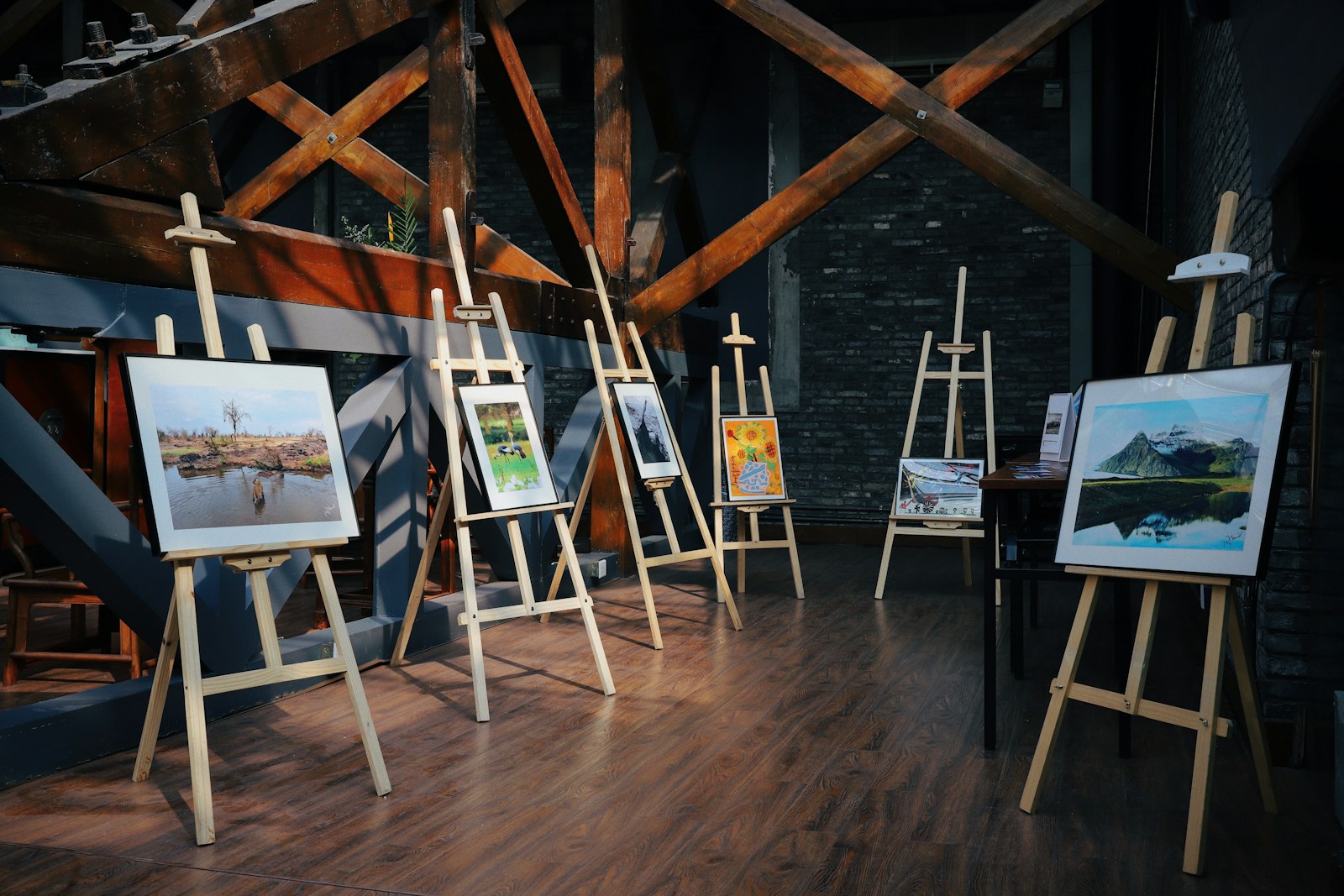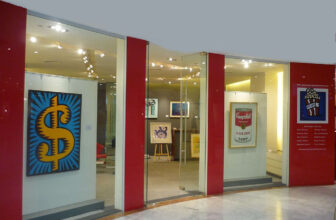
Is Investing in Art a Good Investment?
Art has long captivated the human imagination, transcending cultures, eras, and boundaries. Beyond its aesthetic appeal, art has also emerged as a potential avenue for investment. But is investing in art a good investment? This question requires a nuanced exploration of the art market, the risks and rewards associated with it, and its role in a diversified portfolio.
Understanding the Art Market
The art market is a unique and complex ecosystem. It is driven by subjective factors like personal taste, cultural significance, and artistic legacy. Unlike stocks or real estate, art lacks a standardized valuation method. Prices can vary significantly depending on the artist, medium, provenance, rarity, and market trends. For instance, a painting by a renowned artist like Claude Monet or Pablo Picasso can fetch millions at auction, while works by lesser-known artists may struggle to find buyers.
Key Players in the Art Market
The art market consists of several key players:
- Artists: The creators whose work forms the foundation of the market.
- Collectors: Individuals or institutions who buy art for personal enjoyment or investment purposes.
- Auction Houses: Entities like Sotheby’s and Christie’s that facilitate the buying and selling of high-value art.
- Dealers and Galleries: Intermediaries who sell art to collectors and investors.
- Art Advisors: Professionals who guide buyers on building and managing their art collections.
- Institutions: Museums and foundations that often influence an artist’s reputation and market value.
Understanding these players and their roles can provide insight into the dynamics of art investment.
Why People Invest in Art
Investing in art offers a range of benefits, both tangible and intangible:
- Aesthetic Value: Art can enhance living or working spaces, offering visual and emotional satisfaction.
- Cultural Significance: Owning art often connects investors to cultural heritage and history.
- Diversification: Art provides a way to diversify an investment portfolio, as its value doesn’t always correlate with traditional assets like stocks or bonds.
- Potential for Appreciation: High-quality artworks by established or emerging artists can appreciate in value over time.
- Prestige: Art ownership is sometimes seen as a status symbol, especially in affluent circles.
- Hedge Against Inflation: Tangible assets like art often retain or increase their value during periods of inflation.
Risks of Investing in Art
While art can be an attractive investment, it is not without its risks. Understanding these risks is crucial before committing significant resources to the art market.
- Illiquidity: The art market is relatively illiquid compared to stocks or bonds. Selling a piece of art can take time and may not always result in a profit.
- Market Volatility: Art prices can fluctuate based on trends, economic conditions, and shifts in cultural tastes.
- High Transaction Costs: Auction house fees, gallery commissions, insurance, and storage can eat into profits.
- Lack of Transparency: The art market is often opaque, with limited publicly available data on pricing and sales.
- Forgery and Fraud: Counterfeit artworks and provenance disputes can lead to significant financial losses.
- Subjective Valuation: Unlike financial securities, the value of art is highly subjective and can change rapidly.
- No Income Generation: Unlike dividends from stocks or rental income from real estate, art does not generate passive income.
Types of Art Investments
Investing in art can take many forms, depending on an individual’s interests, budget, and investment goals. Here are some common avenues:
- Fine Art: Includes paintings, sculptures, and other works by renowned artists. This segment often requires substantial capital.
- Contemporary Art: Focuses on works by living artists, offering opportunities to invest in emerging talent.
- Prints and Multiples: Limited-edition prints or sculptures can be more affordable while still offering potential for appreciation.
- Photography: Collectible photography is an accessible entry point for new investors.
- Digital Art and NFTs: Non-fungible tokens (NFTs) have revolutionized the art world by enabling digital ownership of unique works.
Strategies for Investing in Art
If you decide to invest in art, adopting a well-thought-out strategy can increase your chances of success:
- Do Your Research: Understand the artist’s background, market trends, and the history of the artwork.
- Set a Budget: Determine how much you’re willing to invest and stick to it.
- Consult Experts: Work with art advisors, appraisers, or dealers to make informed decisions.
- Diversify: Consider spreading your investment across different artists, mediums, and time periods.
- Buy What You Love: Since financial returns are not guaranteed, focus on acquiring pieces you genuinely enjoy.
- Verify Authenticity: Always request certificates of authenticity and provenance.
- Consider Long-Term Holding: Art investments often require patience, as significant appreciation can take years or even decades.
The Role of NFTs in Art Investment
The emergence of NFTs has created a new frontier in art investment. NFTs are blockchain-based digital assets that represent ownership of unique works, from digital art to music and videos. They offer several advantages:
- Accessibility: NFTs make it easier for smaller investors to participate in the art market.
- Transparency: Blockchain technology ensures a transparent record of ownership and transaction history.
- Global Reach: NFTs enable artists and collectors to connect across borders without intermediaries.
- Potential for High Returns: Early adopters of NFTs have seen significant profits, although the market remains volatile.
However, investing in NFTs also carries risks, including market saturation, lack of regulation, and the speculative nature of digital assets.
Art as a Long-Term Investment
Art is often considered a long-term investment. While some works may appreciate rapidly, most require years to gain significant value. For instance, the works of Impressionist painters were undervalued during their lifetimes but are now worth millions. Similarly, emerging artists may gain recognition over time, leading to increased demand for their work.
Tax Benefits and Implications
Investing in art can have tax advantages, depending on your location. For example:
- Capital Gains Tax: Art sold at a profit may be subject to capital gains tax, although rates can vary.
- Charitable Donations: Donating art to museums or nonprofits can provide tax deductions.
- Estate Planning: Art collections can be included in estate plans to minimize tax liabilities for heirs.
Consulting a tax advisor can help you navigate these complexities.
Art Funds and Fractional Ownership
For investors who want exposure to the art market without purchasing physical pieces, art funds and fractional ownership offer alternative options:
- Art Funds: These operate like mutual funds, pooling investor capital to buy and manage art portfolios.
- Fractional Ownership: Platforms like Masterworks allow investors to purchase shares in high-value artworks, making the market more accessible.
These approaches reduce the barriers to entry and provide diversification, but they also come with fees and limited control over individual assets.
Case Studies: Successful Art Investments
- Leonardo da Vinci’s “Salvator Mundi”: Purchased for $60 in 1958, this painting sold for $450.3 million in 2017, highlighting the potential for astronomical returns.
- Jean-Michel Basquiat’s Work: Basquiat’s pieces, once sold for a few thousand dollars, now command millions at auction.
- Banksy’s Art: The street artist’s works have become highly sought after, with significant appreciation in value over the past two decades.
Is Art Right for Your Portfolio?
Whether art is a good investment depends on your financial goals, risk tolerance, and personal interests. Here are some key considerations:
- Risk Profile: Art is a high-risk, high-reward asset class. Ensure it aligns with your risk tolerance.
- Time Horizon: Art investments often require a long-term perspective.
- Portfolio Diversification: Art can complement traditional investments but should not dominate your portfolio.
- Personal Passion: If you love art, the intangible rewards may outweigh financial returns.
Investing in art can be both financially rewarding and personally fulfilling. However, it is not without its challenges. The market’s complexity, illiquidity, and subjectivity require careful research and planning. By understanding the risks and opportunities, consulting experts, and aligning your investments with your goals, you can navigate the art market effectively.
Ultimately, art investment is about more than just financial gain. It’s an opportunity to connect with human creativity, preserve cultural heritage, and enrich your life. Whether you’re a seasoned investor or a passionate collector, the art world offers a myriad of possibilities to explore.





